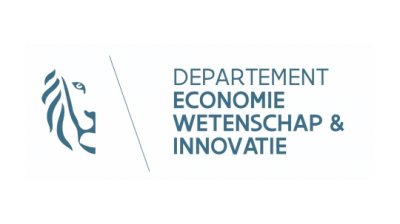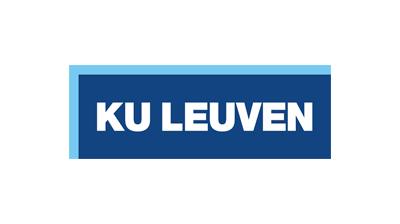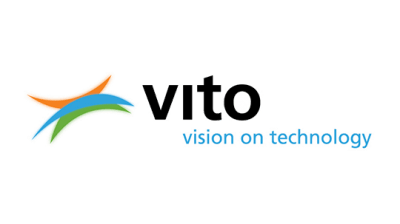The 7 steps of the circular procurement process
A circular procurement process is essentially no different to a traditional procurement process. On this page, we take you through the different steps.
Be sure to check how you can finance a circular procurement project. A good business case helps convince others.
1. Circular Need
Circular procurement starts with asking the right questions
If you want to purchase in accordance with a circular model, it’s important to look critically at the needs behind the purchase.
- Is the purchase really necessary? If you want to commit to high-quality reuse and internal and external sharing, you’ll need a good inventory of what’s already present. This inventory can also be drawn up across different departments or sites, or even across different companies. Sharing platforms such as ProReMat, Werflink and Peerby can help here. If you want to refurbish or upgrade, you also have to be able to provide a good inventory with your contract documents.
- What’s the functional need underlying the request of your internal customer? What do you really need?
What the internal or external customer thinks necessary for their underlying request or need may not be the only solution, so try to separate the customer’s requirements, wishes and needs. A circular purchaser enters into a dialogue with the internal customer to assess exactly what the functional need is. The purchaser must be given the mandate to do this. For example, your internal customer asks you to purchase a certain type of office chair, but in reality just needs somewhere comfortable to sit. It’s important to work together on bringing this functional need to the surface.
2. Circular ambitions
What are your circular ambitions?
It’s not always easy to determine what the circular ambitions of your organisation are, or the circular impact achievable with a specific procurement project. To help, check out the circular ambition chart. This chart lists all the circular goals, with the possible procurement strategies to achieve them.
To improve your chances of success, we recommend committing to more than one goal and using different strategies per objective.
It’s also a useful tool to get a conversation started within your organisation.
- Why do we want to commit to circular procurement?
- How does this tie in with our other sustainability ambitions?
- What does this mean for our organisation?
- What are our ambitions?
- What goals are achievable in the short and long term?
- What strategies are we going to deploy here?
- Who should we involve?
Lots of internal departments can play a role in a circular procurement project: management, your internal customer, the purchasing team, the CSR manager, financial experts, legal department, logistics manager, and communication manager, among others. This means you should consider which internal operators you can best involve in your specific project and product group in good time.
3. Dialogue with the market
Circular procurement changes the relationship with suppliers. You enter partnerships in the search for circular solutions for your organisation’s functional needs. These solutions have to reflect your established circular ambition, so dialogue with the market is crucial.
In addition to the circular criteria that you establish, the relationship with the supplier is also an important aspect in circular procurement. Together, you search for the best circular solution for your organisation’s functional needs. That means you should share your organisation’s circular ambition level (and the applicable definitions), and search out suppliers willing to participate in the selected circular goals. In addition, try to gain insight into the supply chain: which current or additional operators can have an impact on circularity? What cooperation projects can be initiated?
Ways to organise a pre-competition market dialogue:
- Request for Information (RFI), an open written market consultation
- Plenary market dialogue involving different suppliers
The importance of dialogue with the market circular means the procurement process may initially require more time. By presenting your functional needs and circular ambitions to the market, you'll find out what circular products and services/business models are already available. It can also provide an impulse to search for new solutions together with suppliers, which stimulates innovation.
4. Specifications and award
How can we embed our circular wishes and needs in the contract documents?
After an extensive market dialogue, determine the scope of your project:
- Are you looking for a product or a service?
- Is the TCO included?
- Are repairs and maintenance also recorded?
- What is the residual value at the end of use? What agreements are possible?
- What contract duration makes sense?
Take into account the functional lifespan of your product.
If necessary, ask the market about the realistic return on investment.
This can help you when you want to encourage suppliers to accept a longer contract duration than normal. It’s useful to include conditions of termination or performance bonuses. You can also opt for shorter contracts with renewal options. - Is innovation or a development process desirable or necessary?
Match the choice of your procurement procedure with the goals you want to achieve with your circular procurement project. Think about negotiation opportunities or innovation processes, for example.
Selection criteria are embedded to guarantee the competence of the contractor. However, it’s not easy for circular providers, often SMEs and startups, to present a lot of experience and references. In order not to exclude these providers, you could use alternative selection criteria:
- A descriptin of the provider’s technical equipment and the measures taken to safeguard quality, and its study and research possibilities
- An indicatin of supply chain management systems and the tracking systems that the provider can apply when executing the contract
- An indicatin of the environmental management measures that the provider can apply when executing of the contract
Then, formulate what you want to purchase and the requirements this has to meet. It’s best to describe the technical specifications in terms of function as much as possible, rather than in terms of technical characteristics. This offers the market more flexibility to come up with circular solutions, and to offer the most recent innovations. Clearly distinguish criteria and requirements. Use the circular ambitions that you specifically noted for the product group as a starting point.
It’s recommended that the award criteria aren’t assessed solely on price. Public procurement law allows Life Cycle Cost to be included under 'costs', which can have a positive impact on circularity. A growth path can also be included in the award criteria. Both the client and the contractor can ask for something to be realised during the contract duration, such as something not yet possible at the start of the agreement.
For the assessment, give priority to the following:
- Quantitative: objective and measurable criteria. For example, the percentage of recycled content
- Qualitative: a worded, well-motivated assessment of a proposal by the applicant, such as a plan of action
- A combination of both: you can quantitatively assess what can be unambiguously measured and checked, and qualitatively assess the other criteria.
Make sure you provide some direction or factors that need to be considered, as this will allow you to compare and assess the various proposals better.
Naturally, the weighting of the criteria is also important here. The price-quality ratio depends on the product or service category, but also determines the impact you can achieve.
Contract execution requirements can be imposed unilaterally. Here, you can include aspects such as take-back, end-of-lifespan provisions, or packaging upon delivery. Make sure that what you ask for is always feasible. A growth trajectory can also be included here.
Inspiration and specific examples:
- https://www.mvicriteria.nl/en
- https://ec.europa.eu/environment/gpp/eu_gpp_criteria_en.htm
- circular procurement cases
- Circular suppliers
Given the time it takes to develop tools, websites and reports on circular criteria, the best place to find the latest information and trends is from your dialogue with the market.
It also makes sense to include your circular ambitions in the contract documents. This immediately makes your organisation’s circularity aims clear.
Public authorities must ensure that their use of the criteria, like all requirements in tender documents, respects the laws and principles which apply. The following principles should be taken into account when using GPP criteria:
- Transparency: all bidders should be informed in the same way, at the same time; environmental requirements should be specified as clearly as possible, in order to enable objective comparison of offers.
- Non-discrimination: social and environmental criteria cannot be introduced in order to give an advantage to local or national suppliers.
- Link all requirements with the subject matter of the contract: contracting authorities cannot, for example, require a vehicles’ supplier to use recycled paper in its administration or to serve organic food in its canteen.
- Equivalent standards: contracting authorities should always explicitly recognise and accept products complying with equivalent environmental specifications (as attested under equivalent certifications or schemes).
Source: https://www.preston.gov.uk/makingspendmattertoolkit
5. Use and execution
Circularity is all about use
We can purchase products labelled circular, but if they end up in the incinerator before the end of their lifespan they can hardly be described as such. We distinguish between the already realised circularity (design and production) and the circular potential (use and reuse) of a product. For this reason, it’s crucial to continue to monitor circularity even after the contract has been signed.
Cooperation between purchasers and contract managers is necessary to achieve a real impact in terms of circularity. Agreements on performance, repair, maintenance and lifespan must be followed up and evaluated, but correct use by the internal employees is also important. You can include user training in the contract.
This is often a learning process, where both internal staff and suppliers must be open to grow together.
6. End of use
How can we ensure maximum value retention at the end of use?
The end-of-use phase is crucial for realising the circular potential of a product, even if this product is part of a service provided. Ideally, agreements on this are already laid down in the contract. These must of course now be followed up and facilitated, which isn’t always standard practice in a procurement process.
It is also worth taking a critical look at the periods of use. Can the product really no longer be used, or are these simply depreciation periods or habits? What parameters determine if the quality is no longer good enough for continued use of the product?
End-of-use is not necessarily the end of the lifespan. Look first at the possibilities for valorising the products: can recovery, internal or external reuse or refurbishment extend the lifespan? If this is no longer possible, try to retain the value of the parts and materials as much as possible, possibly in cooperation with the supplier or a specialist processor. Transparency about the following loop is necessary to guarantee circularity.
If products or materials have sufficient residual value, they can be valorised financially, such as in buyback or buy-sell models. This can also be included in the contract and the business case for circular procurement.
7. Evaluation
How can we include our experiences in the next circular procurement project?
The circular procurement process is one of continuous learning and improvement, involving many more operators than a traditional process.
It’s important to work together with these operators on evaluating the circular procurement project, and include the lessons learned in subsequent projects. In this way, circularity can eventually be embedded in your organisation’s procurement strategy.
Relevant publications for shaping your circular procurement proces
This document is created as a manual for the Procurement Transformation Workshop. This workshop can be set up by organisations who want to rethink their procurement processes and integrate circularit…
The European Commission is supporting pre-commercial procurement to help public procurers and suppliers develop innovative solutions to societal challenges. More information about what pre-commerical…
Building on the experience from organising market engagement as part of the Make ICT Fair project, ICLEI - Local Governments for Sustainability and Electronics Watch recommend to procurers a dialogue…
Implementing sustainable resource management in your business.
Best Practice Report published by ICLEI
The EU GPP criteria are developed to facilitate the inclusion of green requirements in public tender documents. While the adopted EU GPP criteria aim to reach a good balance between environmental per…
With the aid of this tool, you will quickly collect the latest SPP criteria for your procurement document. The tool works best when SPP ambitions have been defined in advance
Best Practice Report on Market Engagement published by ICLEI
EN The GPP Training Toolkit is designed for use by public purchasers and by GPP trainers, or integration in general public procurement training courses and workshops. This module is deals with how to…
The GPP Training Toolkit is designed for use by public purchasers and by GPP trainers, or integration in general public procurement training courses and workshops. This module is about why market eng…
Determine your circular ambitions by setting goals and strategies to achieve them.
Good practice and guidance document on Green Public Procurement.


















